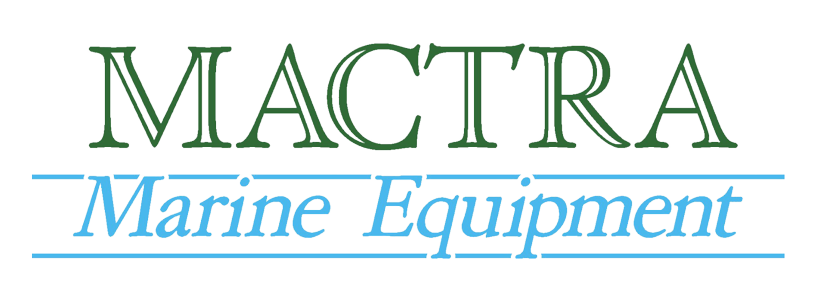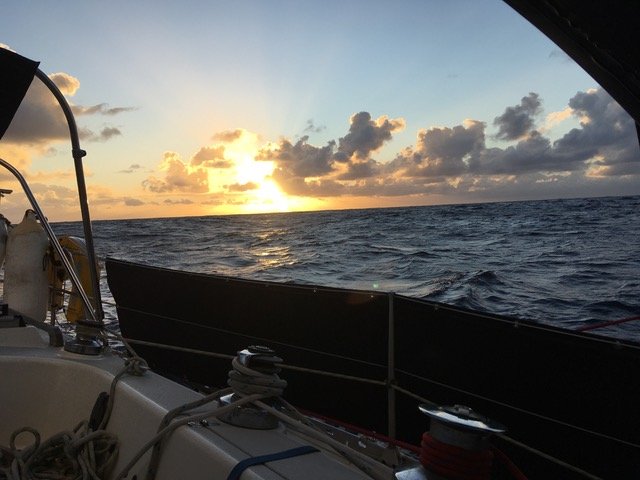Sailing the Atlantic - 2019 Part 1
Those of you that know us as a family, know our love of travel and of sailing our old boat to places around the world to explore. This involves making ocean passages from time to time. Our last ocean passage was in December 2019 when Ann, Emily & I sailed our boat 3000 nautical miles across the Atlantic from the Canary Islands to the West Indies. It took us 21 days.
Our Route
The Trade route between Europe and the Americas uses the North Easterly Trade winds that come off the North African Coast and blow vessels over to West Indies & South America. This is how the Caribbean islands were populated with slaves to work on the European owned plantations. This is how sailing boats today generally cross the Atlantic.
One week out from Las Palmas. The more northern routes are often against the prevailing winds.
It was a slow start. The old sailors used to say,’ Head south until the butter melts and then turn right’ This is what we were doing. In a way we were quite glad that we didn’t have a rocking rollercoaster of a start. That really would have been a shock to the system.
The First 5 Days
Within 24 hours of leaving the Canary Islands we were out of sight of land, not another vessel in sight, just the three of us and our boat. This really is social isolation. In trade wind sailing the wind and seas are from behind, seas as high as 5 metres with the occasional rouge wave a bit higher. The water on which we are floating is 5 kilometres deep. We have no internet, no social media, just a satellite phone for voice and data calls, mainly weather forecasts. After a few days we are out of the range of rescue helicopters. We have a VHF radio and a long radio HF radio to talk to other vessels and to listen to the BBC World Service, but primarily we are on our own.
We are so dependent upon each other and our boat to make it to the other side. We have a watch system that ensures that one person is awake at all times. Our boat sails onward using a self-steering gear 24 hours a day. The hours become days and the days become weeks. We are living in this little bubble that we have created for ourselves.
The last four or five days have gently eased us into the life on board, a life where there is no normal day and night, no breakfast, lunch and dinner. Just a system that makes sure that one person is up and keeping an eye on progress, how the boat is performing and at this part of the voyage, keeping an eye out for other ships, especially the big ones. We are within a hundred miles or so of the African coast heading in the general direction of the Cape Verde Islands. There are a lot of big cargo ships on route towards Cape Town.
Weather
Weather is a big factor on how we sail our boat. In trade wind sailing during the day the skies are blue flecked with rows of little fluffy white clouds that take the shapes of poodles, elves, angels and goblins or whatever else the imagination allows. In the evenings these little white clouds form into more menacing dark grey and black sheets known as squalls, which bring with them massive winds and downpours. They keep coming through the night relentlessly.
Our boat still has to sail on. Before a squall arrives, you can feel the change in temperature on your face, Its time to reduce sail, the squall arrives, with it wind and rain, the boat speeds up, running fast down the big waves, then it passes. The work isn’t finished as without sufficient sail up, the boat will wallow at the bottom of the next wave and risk going beam on and being broached. More sail is needed.
The Night Watch
On the sixth day, Ann, first between 9.00pm and midnight and later when Emily took over the watch until 3.00am, there were signs that the wind was starting to fill in. From my bunk I could hear sails being adjusted, winches adjusting ropes and finally the quiet, as the engine was turned off and I could hear the sea running past the hull. When the wind isn’t enough alone to propel the boat, the engine is turned on, often at low revs, just to work together with the sails to keep the boat moving forward.
When I got up to start my watch at 3.00am I read what Ann had written in the logbook and spoke with Emily, The wind was strengthening all the time and was starting to turn to blow more and more from behind us.
On a sailing boat at night there are just the navigation lights shining at the top of the mast, the light from the compass and instruments and the occasionally flicked on light of a head torch. Below is kept deliberately dark to let those off watch sleep and to allow the person on watch to try to keep their night vision. The electronics are dimmed to ‘night view’. Notes are made in the logbook using a chart table light with its red bulb casting it’s glow. I clipped on, got into the cockpit and looked up at the sails and the arrow that tells us where the wind is coming from. The sky is a mass of millions and millions of stars. I looked at the compass and adjusted the course to make best use of the wind. We were now heading 270 degrees and out to the west. For the first time since we left the Canaries our boat was pointing in the direction that we wanted to go in and the wind was picking up nicely. By day seven we were in the trades, the seas had built and our boat was rolling along as she run down the waves towards our destination.
Siteseeing
It’s not all hard work. There are the schools of dolphins and porpoises that dance around the boat and her wake. There are whales seen on the horizon. The sunrises and sunsets are amazing. As are our fellow crew members who, without them none of this would be possible!
Part 2 of the adventure will follow… Happy Sailing!



